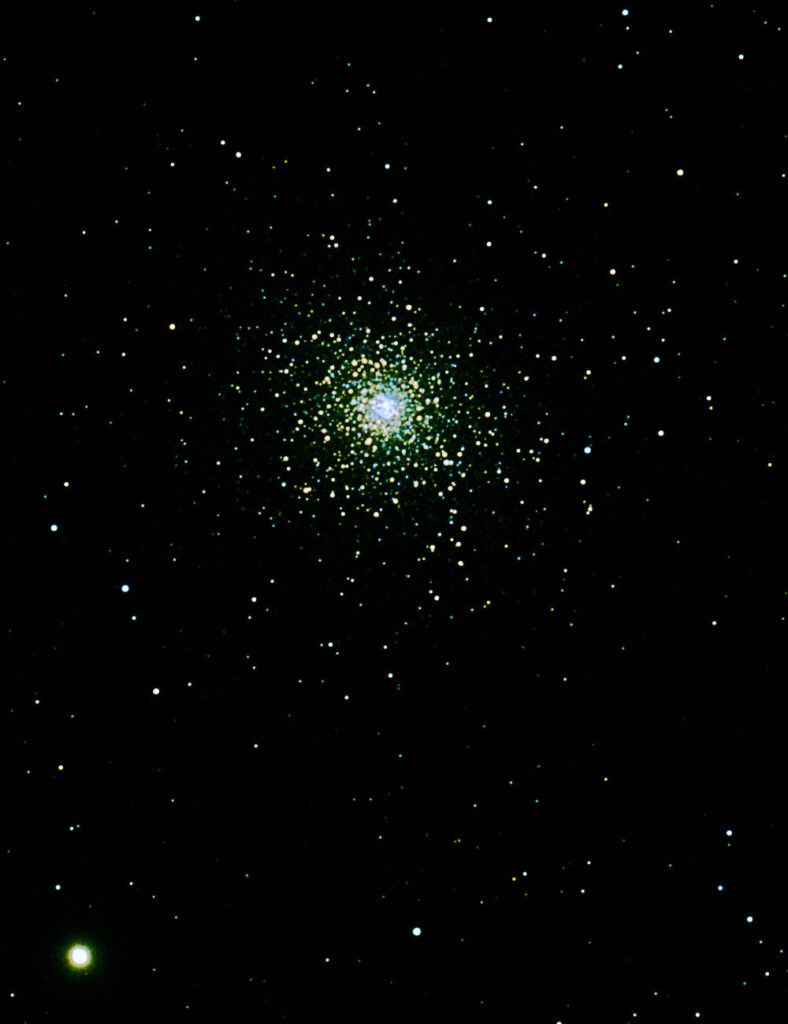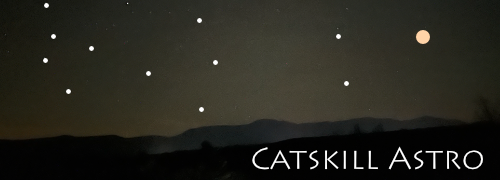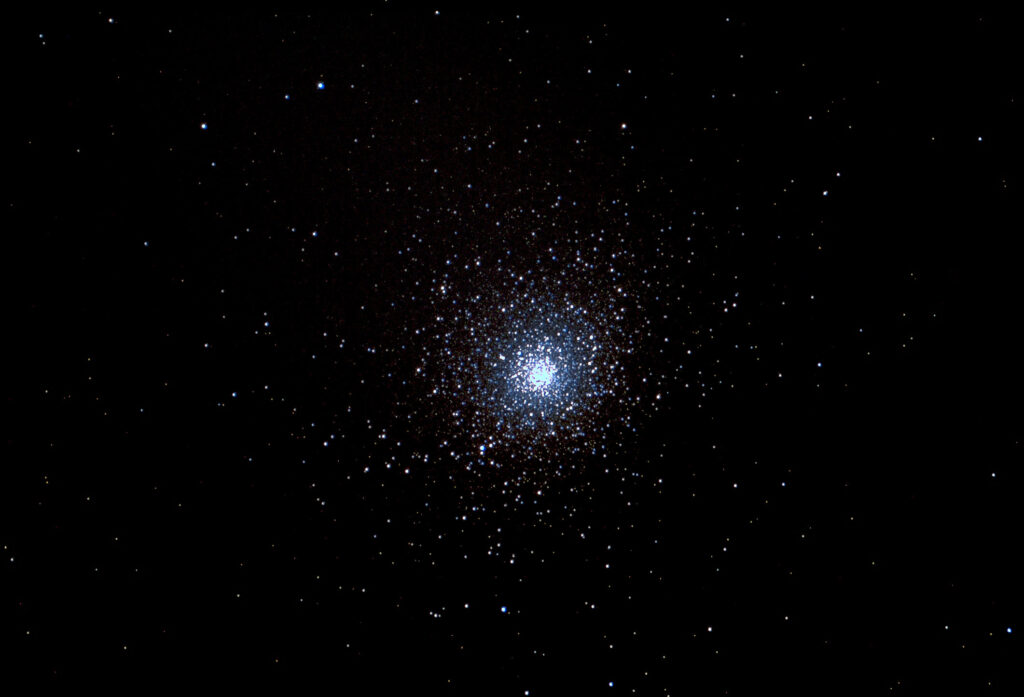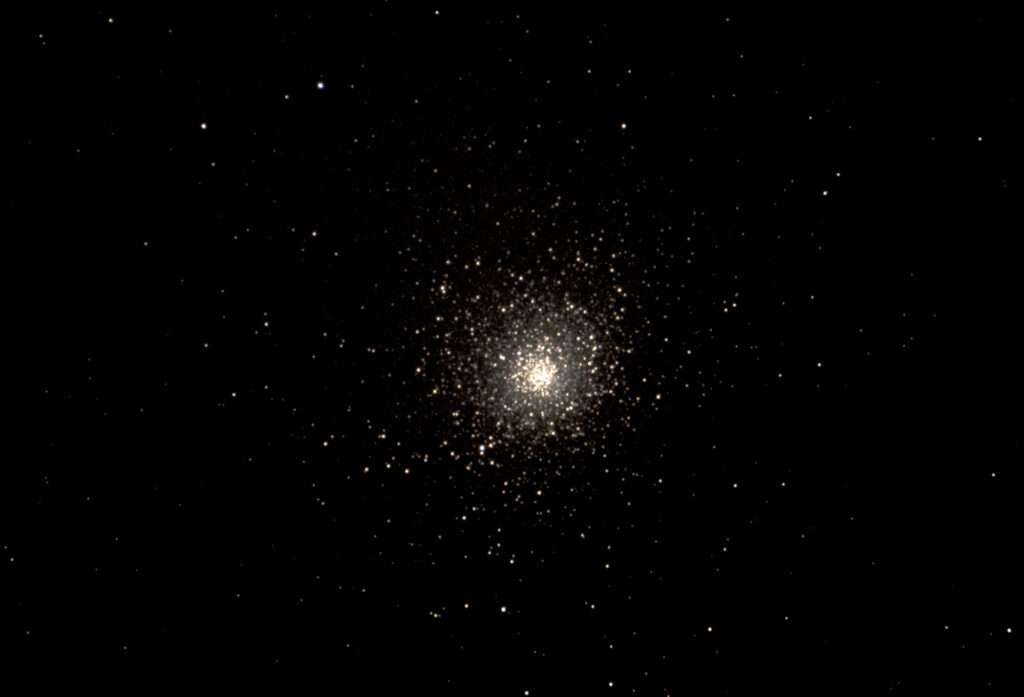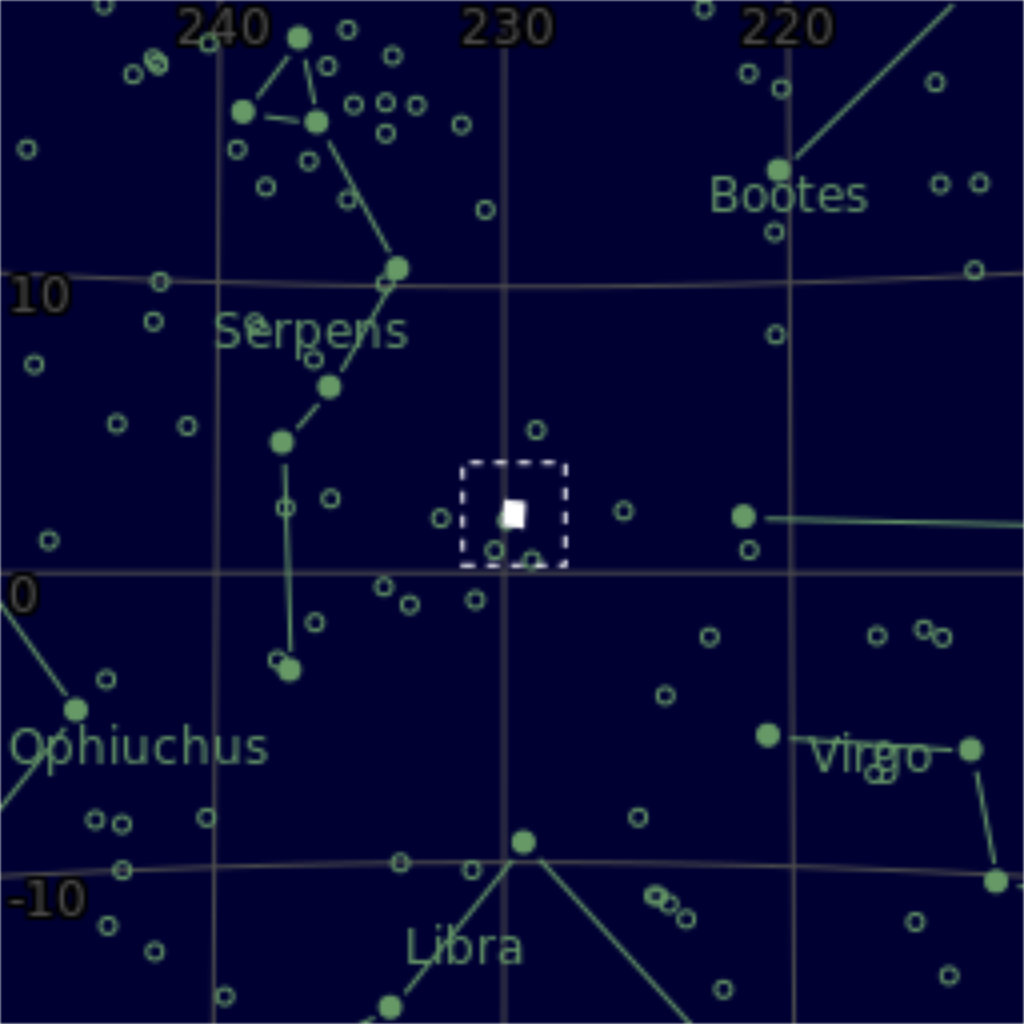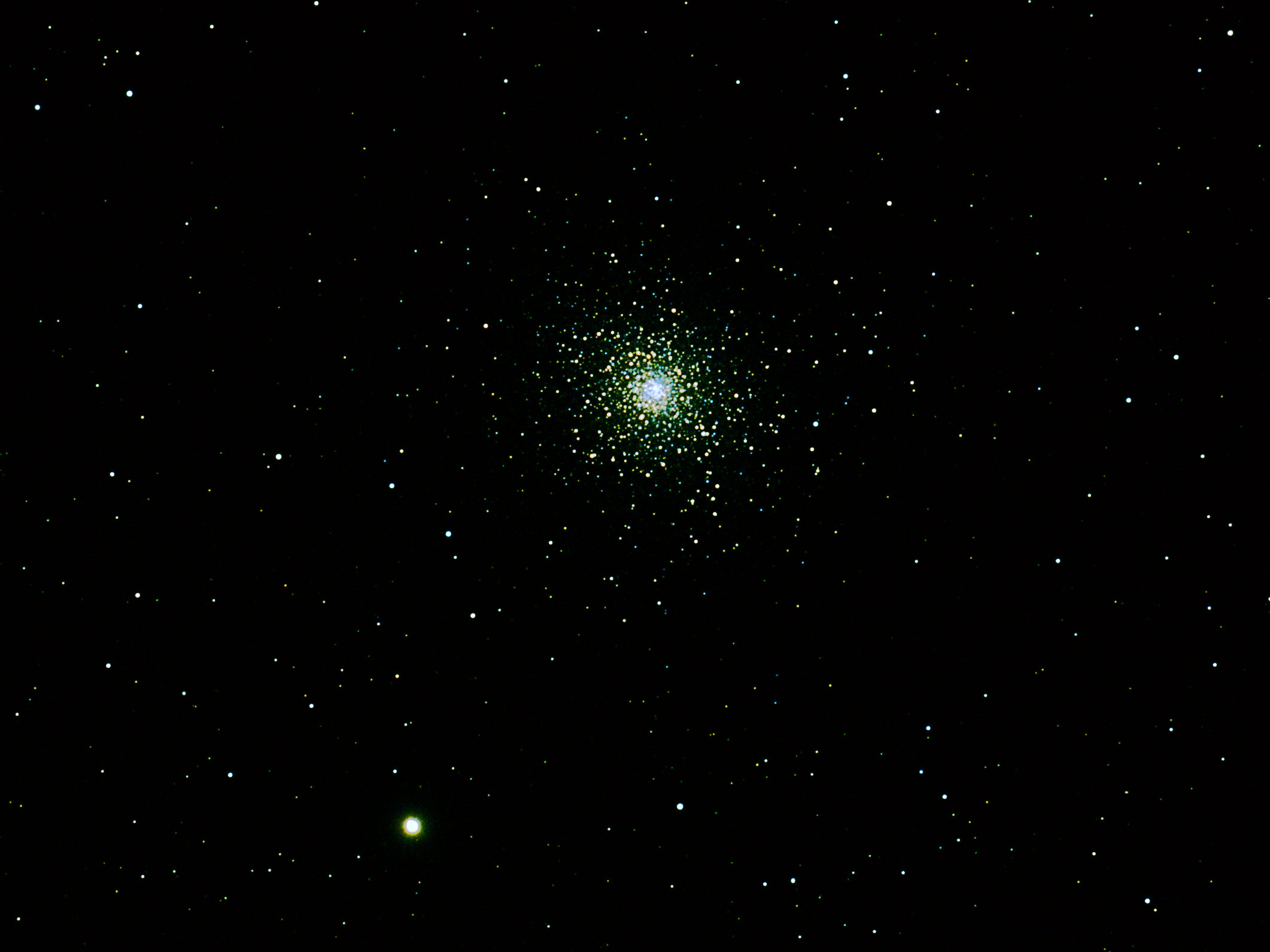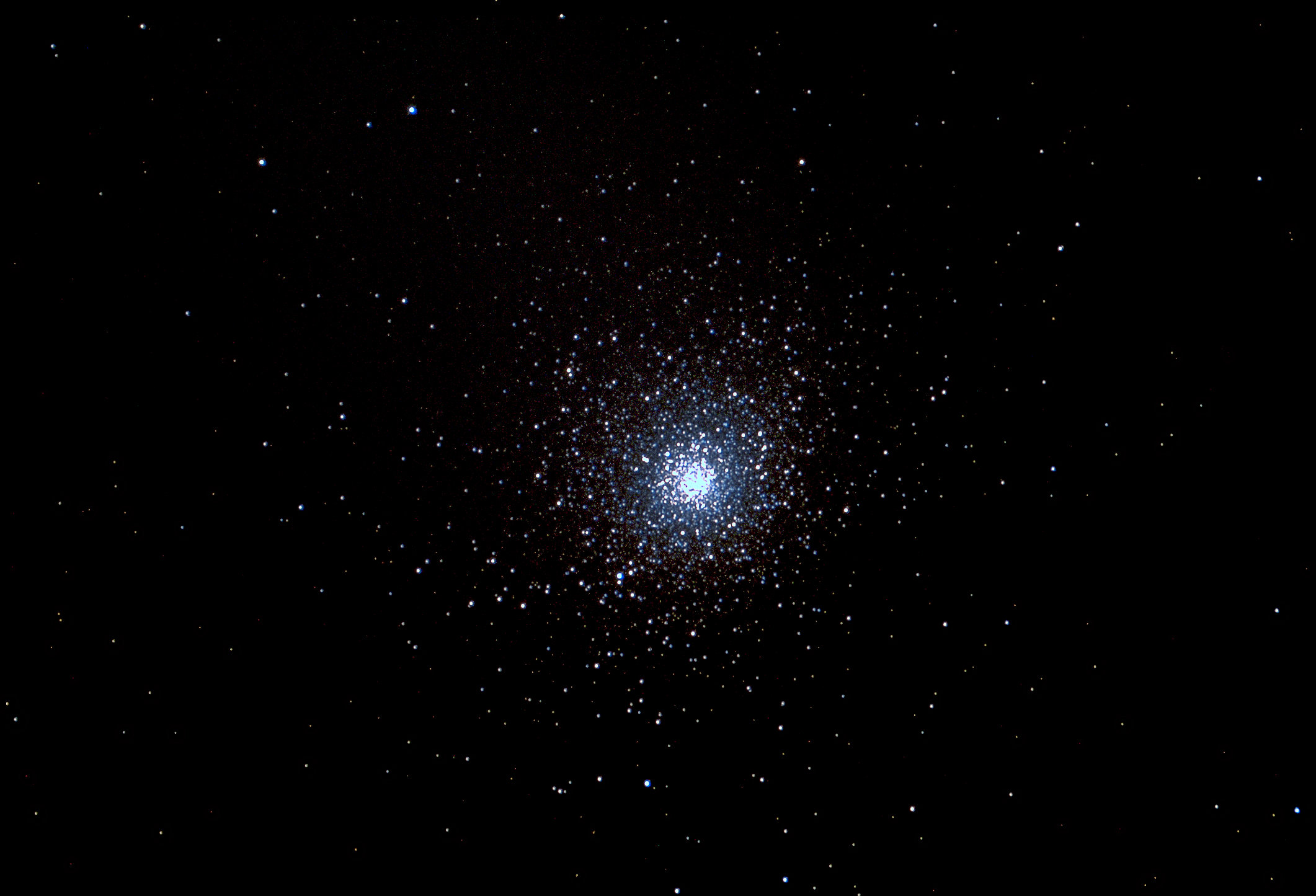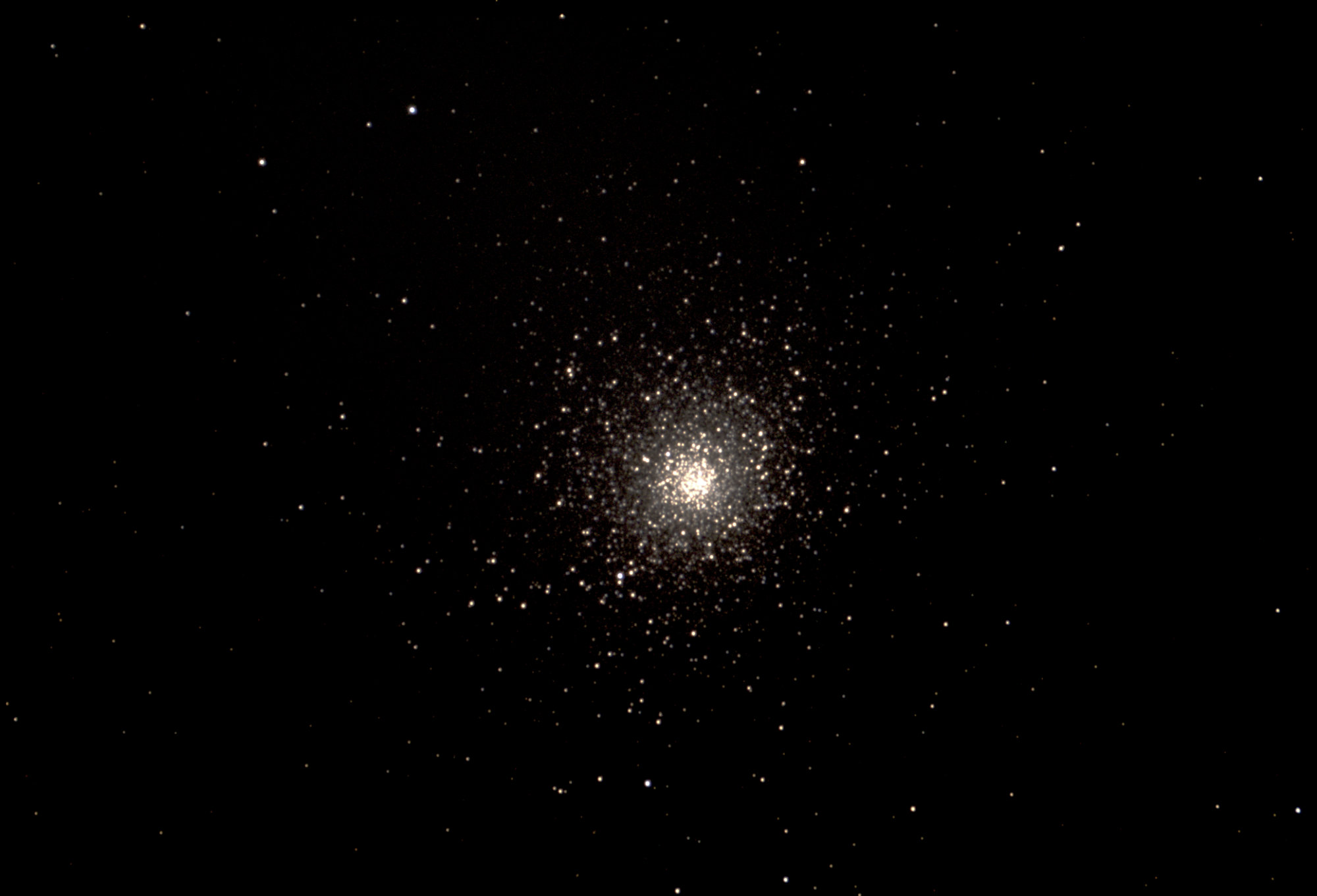| Description | M5 was discovered by German astronomer Gottfried Kirch in 1702 when he was observing a comet. Charles Messier discovered it independently on May 23, 1764, a gap of 15 days since M4 and 4 objects (M5-M8) this same date: "Beautiful Nebula discovered between the Balance [Libra] & the Serpent [Serpens].... [I]t doesn't contain any star; it is round, & one sees it very well, in a fine [clear dark] sky, with an ordinary refractor of 1-foot [FL]. M. Messier has reported it in the chart of the comet of 1763". William Herschel was the first to resolve this cluster into stars; he counted 200 of them with his 40-foot [FL] reflector in 1791, "although the middle is so compressed that it is impossible to distinguish the components." <--> M5 is the third brightest and largest GC in the catalog at AM 5.63, and 21.6' diameter, respectively. The diameter includes the loose halo of stars surrounding the central core. So while may be the largest cluster, it is far from the largest globular core. This is my favorite Messier GC, and I've captured it many times. I show two here, with the most recent my favorite and featured. Messier clusters are a "goto" on a full moon night, as they're so bright that, if it's clear, you can still achieve an observation of beauty. However, the most recent capture was made early in the morning where the moon had nearly set, contributing to the better color balance than in the other from April, 2024. Both are color-balance corrected but you can see the red giant and blue stars clearly in the 2025 capture. I've included the pre-color adjusted image FYI for the 2024 capture which was badly distorted by the full moon conditions. |
